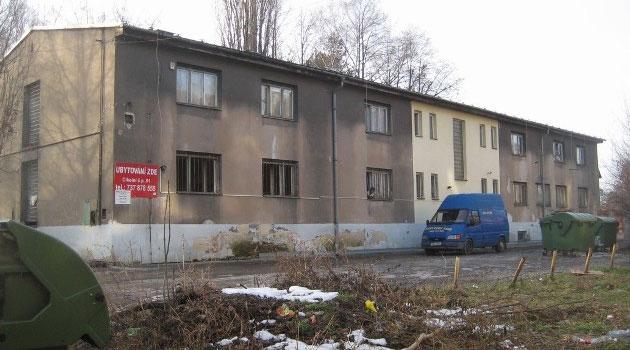Czech Republic: Number of socially excluded localities has doubled since 2006 to 606

The number of socially excluded localities has almost doubled in the Czech Republic since the first "Analysis of socially excluded Roma localities in the Czech Republic and the absorption capacity of entities involved in this field" was presented on 6 September 2006. That year the number of impoverished apartment complexes, impoverished neighborhoods and whole streets was estimated at 300, while now it is estimated to number 606 such localities in 297 municipalities.
Those are the findings of the most recent analysis of socially excluded localities produced once again, nine years after the first one, by the GAC company for the Czech Labor Ministry. Back in 2006 between 60 000 – 80 000 people were estimated to live in these localities; today the estimate is that between 95 000 and 115 000 people are so excluded.
GAC researchers noted a growth in the number of inhabitants of such areas who are non-Romani and who are senior citizens. In several socially excluded localities non-Romani residents even comprise the majority.
However, the largest number of such localities continues to be those where the vast majority of the inhabitants are Romani. The number of ghettoes has also risen in every single region of the country.
In the Karlovy Vary Region, the number of such localities has tripled. Nine years ago researchers found 18 such localities there, this year they found 61.
In the Moravian-Silesian, Plzeň and South Moravian Regions the number of impoverished places has risen roughly 2.5 times. The researchers say the economic crisis has contributed to the deterioration of the situation.
An even stronger role, however, is said to be played by the fact that a new generation of people is growing up in the ghettos who apparently have no chance of escaping their impoverished environments. Three-quarters of the working-age inhabitants of these localities have only completed a primary education.
In these problematic locations, only one-third of the children, on average, attend preschool. In some places only one out of every 10 children attends preschool, while in others all children attend preschool.
A large number of the children in these socially excluded localities attend ethnically homogeneous schools. The GAC researchers report that 22 % of the children surveyed attend such schools, which in real numbers means between 3 000 and 3 500 children.
Two-thirds of the ghettos researched do have recreational activities on offer for local residents. The authors of the analysis also report that such ghettos are no longer a strictly urban phenomenon.
People are moving to more and more remote places. The impoverished localities are also disintegrating into smaller self-contained units.
In 2006 an average of 271 inhabitants were living in these excluded places, while this year the average such locality has 188 inhabitants. The number of people living in residential hotels has also significantly grown.
In 2008 there were around 11 000 adults and children living in residential hotels and drawing on the state housing benefit in order to do so. As of last December there were 27 000 persons in such facilities.
There are as many as 700 residential hotels in the Czech Republic. The authors of the analysis say not all of them house people in desperate situations.
Some of these facilities serve seasonal or temporary laborers, while others are intended for people who are not at all in any kind of existential need. Between 80 and 85 % of the adults living in the socially excluded localities identified today are unemployed.
Roughly one-fifth of the adults in these localities have no guarantee that regular employment would even pay enough to actually help them improve their lot. Approximately one-third to one-half of the men and women in such areas have experience in working under the table.
The Czech Labor and Social Affairs Ministry commissioned the GAC company with updating its 2006 map of socially excluded localities. The Czech state and the European Social Fund financed the research.
GAC worked on updating the information in collaboration with experts from the Faculty of Science at Charles University and one of its outputs will be an interactive map compiling a large number of demographic characteristics and other information about socially excluded localities, including the option of regularly updating the data. The results will serve for the design of projects to improve the situation and to direct the flow of EU money.
Number of socially excluded localities per region in 2006 and 2014 and the change factor:
| Region | 2006 | 2014 | Change factor |
| Prague | 6 | 7 | 1.17 |
| South Bohemia | 16 | 38 | 2.38 |
| South Moravia | 11 | 28 | 2.55 |
| Karlovy Vary | 18 | 61 | 3.39 |
| Hradec Králové | 25 | 36 | 1.44 |
| Liberec | 26 | 48 | 1.85 |
| Moravian-Silesian | 28 | 72 | 2.57 |
| Olomouc | 27 | 62 | 2.3 |
| Pardubice | 15 | 24 | 1.6 |
| Plzeň | 17 | 42 | 2.47 |
| Central Bohemian | 36 | 64 | 1.78 |
| Ústecký | 63 | 89 | 1.41 |
| Vysočina | 11 | 13 | 1,18 |
| Zlínský | 11 | 22 | 2 |
| total | 310 | 606 | 1.95 |
Source: Analysis of Socially Excluded Localities in the Czech Republic